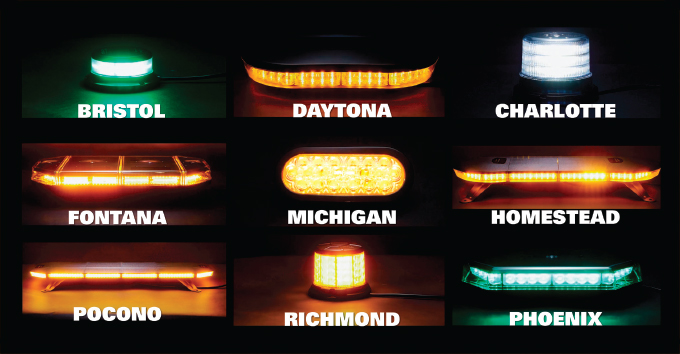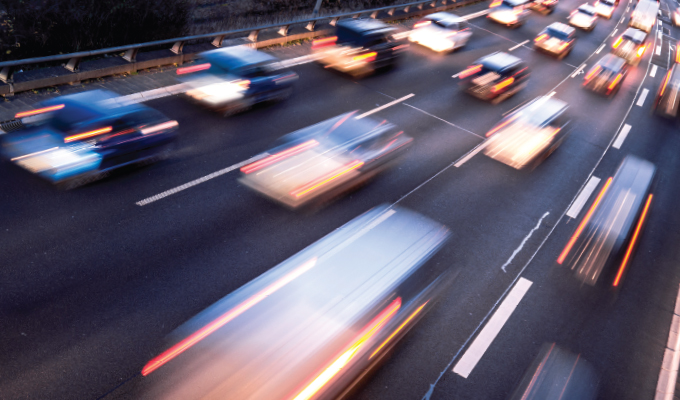According to the federal government, motor vehicle crashes claimed nearly 37,000 lives in 2018. Crashes are also responsible for millions of injuries and impose a comprehensive cost to society of $836 billion in property loss, medical and emergency bills, productivity loss, lost quality of life, and other related costs. In 2019, the motor vehicle death toll was similar, and there were nearly 7 million police-reported crashes that injured more than 2.7 million people. This paints a bleak picture of highway safety, but does not even include new data surrounding the COVID-19 pandemic and its effects.
“In 2020, emptier roads turned into racetracks, impaired and distracted driving was reported as more widespread, protections like seat belt use appear to have dipped, and the traffic fatality rate spiked,” informs Catherine Chase, president of Advocates for Highway and Auto Safety.
So the question for fleet managers is, “How do I keep my teams and equipment safe amidst the increasingly hostile backdrop of speeding cars and unpredictable driving habits?” The answer to that question is nuanced and varied across a variety of safety initiatives, including personnel training, equipment improvement, and working with lawmakers for continued vigilance in creating and enforcing highway safety laws regarding work truck safety.
However complex the issue of fleet safety can be, one of the most critical and economical “first-step” ways to improve safety is through better LED vehicle lighting options and installations. Learning from one of the most widely-known fleet vehicles, the school bus, it’s apparent that increasing visibility through lighting is central to safety.
HIGH VISIBILITY
Why are school buses the “gold standard” in safe vehicles? While it’s true that school buses actually meet 42 federal motor vehicle safety standards (more than any other vehicle on the road), a simple axiom of vehicle safety that school buses follow is high visibility.
School buses are designed so that they’re highly visible, with safety features such as flashing red lights, cross-view mirrors, and stop-sign arms. They also include protective seating, high crush standards, and rollover protection features—but the key school bus safety feature is arguably the degree to which they are visible to other drivers for the purpose of preventing an accident in the first place. This high visibility is achieved by intentionally interrupting distracted drivers with features that provide visible contrasts to the surrounding roadscape. Even if the red lights of a school bus are not flashing, they remain highly visible, combining with other LEDs and commanding the focus and attention of drivers and thereby increasing safety.
“This high degree of visibility for buses can be carried directly over as the first step in making sure the work zone is safe and secure for work vehicles,” says Mike Bell, business development manager for amber products at Opti-Luxx. “It’s not as simple as tossing a beacon anywhere onto a commercial vehicle and calling it good. Considerations like usability, environment, durability, brightness, proper locationing, and flash pattern options all contribute to improved visibility and should be planned strategically.”
SAFETY FOR FLEETS
Fleet managers have more LED lighting options than ever today, with suppliers like Opti-Luxx innovating lighting solutions that are bright, durable, simple to install, and ready for anything. Additionally, many lights are available in magnetic as well as permanent mounts, making lighting safety achievable for any vehicle type. The lesson we can learn from the safety record of school buses seems to be that our kids certainly deserve the safest vehicles on the roads today. We can and should have that same mindset for the parents of those kids—the working adults—who are on the roads as well.
Bell continues, “We like to talk about an ecosystem of light for drivers, giving them the ability to command attention adaptively depending on their theaters of operation in a variety of traffic and weather conditions—much like a school bus driver operating the command center of lighting and alert features at their disposal.”

EVOLUTION OF VISIBILITY
Typifying the opposite of increasing attention … imagine for a moment a fleet of work vehicles without lights. None—just modestly painted trucks without lightbars, beacons, or signals. They arrive at the worksite, move into position alongside traffic, and completely blend in with the surroundings. No visual interruption to the speeding traffic that rockets by only inches away. Workers exit vehicles and take on their tasks, all the while only hoping drivers will see them and make appropriate adjustments to speed and flow. It’s doubtful you’d have anyone line up for that assignment.
While this scenario is obviously absurd, it illustrates how the opposite of “blending in with terrible lighting” is “standing out with better lighting.” We can also realize that moving away from the absurd “invisible” work vehicle example happens on a continuum, with evolving steps based on how our roadway environments change. Safe enough will never be safe enough. New speeds, new vehicles, more lighting types on the roadways, more driver distractions—all require new advances in lighting technology to stay visible and safe. What might suffice for lighting safety to command attention one year might be completely inadequate the next and so on. In the not-too-distant past, an incandescent amber beacon was a sufficient way to alert drivers and improve safety. Today, every construction barrel has an illuminated amber light, and the overall “lighting clutter” on roadways means improved lighting innovations are in constant and critical demand to achieve high visibility.
BETTER LIGHTING
It can feel like a daunting task to plan commercial lighting options to achieve the goal of high visibility. A few simple observations about what makes better lighting contribute to high visibility can help:
- Better lighting means reliable lighting. A failed light doesn’t improve safety at all.
- Better lighting means flash pattern options, giving drivers the ability to make scenario-based determinations to provide the safest, most effective lighting.
- Better lighting means achieving high visibility in a multitude of roadway scenarios.
BEST LIGHTING PLAN
Bell sums up the challenge of supplying better lights this way, “Better lighting ultimately means choosing the best lighting supplier to make sure your fleet is not only staying visible today, but is also ready to adapt and change as future roadways bring new visibility challenges.” Turning to a supplier who has led the way in LED school bus lighting for nearly 20 years makes perfect sense when looking to make fleets more visible and therefore safer.
Bell adds, “When school districts choose a lighting supplier like Opti-Luxx to make their fleets command attention and keep kids safe, commercial fleet managers can be confident they’re giving their drivers the best LED lights available to stay visible and safe. We take that same bussing industry core belief that ‘Seeing is Safety’—and carry it forward to improve safety through better lighting for snowplows, utility vehicles, delivery fleets, agricultural equipment, and all work truck applications.”
FOR MORE INFORMATION
Opti-Luxx is a full-service supplier of LED commercial vehicle lighting and offers customers product development, application engineering, program management, launch support for new and existing products, and service after the sale. Find out more, visit www.opti-luxx.com or call 616.379.4142.




